Had history turned out differently, Swiss watchmaking might have established itself in Waterford towards the end of the eighteenth century. A thousand Geneva watchmakers were ready to bring Swiss industriousness and know-how to the people of Passage on the southern coast of Ireland. This utopian project fell through at the last moment. Switzerland on the River Suir was not to be. All that remains is the name: Geneva Barracks.
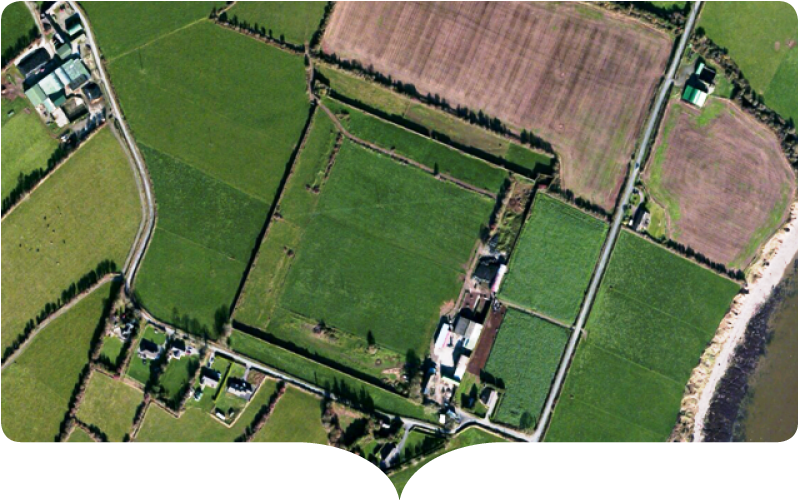
Arial view of the ground plan of Geneva Barracks, Passage, Co. Waterford
In 1782 a group of Geneva “mechanics,” as the documents characterise them, one thousand strong and disaffected, staged a bloodless uprising against their masters, the combined forces of the French and the Bernese. Their rebellion was defeated. Some rebels relocated to Brussels, others to the shores of Lake Constance. King George III of England, through his emissary Lord Mahon (who had studied at the University of Geneva), offered these rebellious craftsmen asylum in Ireland. The idea was that the hard-working Genevans were to set a good example to the local population, then under English rule. Tired of the heavy hand of their masters, these “mechanics” thought Ireland might prove a more utopian location. We could see this genuine attempt to found a new community of workers as an early example of a free-trade zone or business park.
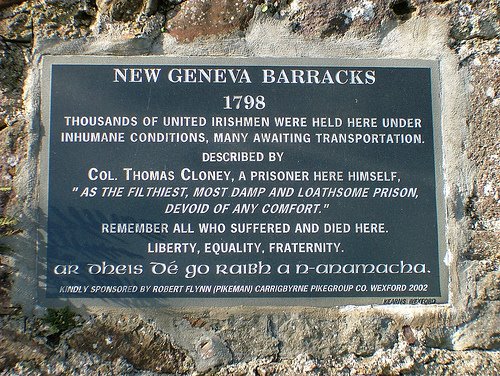
The proposed site for New Geneva was east of the town of Passage in County Waterford on the estuary of the River Suir. It was on tenanted land of the well-connected Alcock family, whose line ran to members of parliament and soldiery. Their estate, however, had originally been confiscated c. 1654 from the Butler family. The British government acquired the site in 1782 with the intention of making it over to the Genevans. Across the water from the proposed New Geneva is Duncannon Fort, testifying to the strategic importance of the estuary.

Map of Duncannon Fort dating to 1611 © The British Library
There was already a settlement of French Huguenots in Waterford and Switzerland’s Geneva was itself a Huguenot town, staunchly reformist. Utopias were all the rage in the late eighteenth century. Shakers in America had founded utopian communities built around the sanctity of work, work as a sign of the Elect, an idea derived from Martin Luther and still part of the American tool kit today.
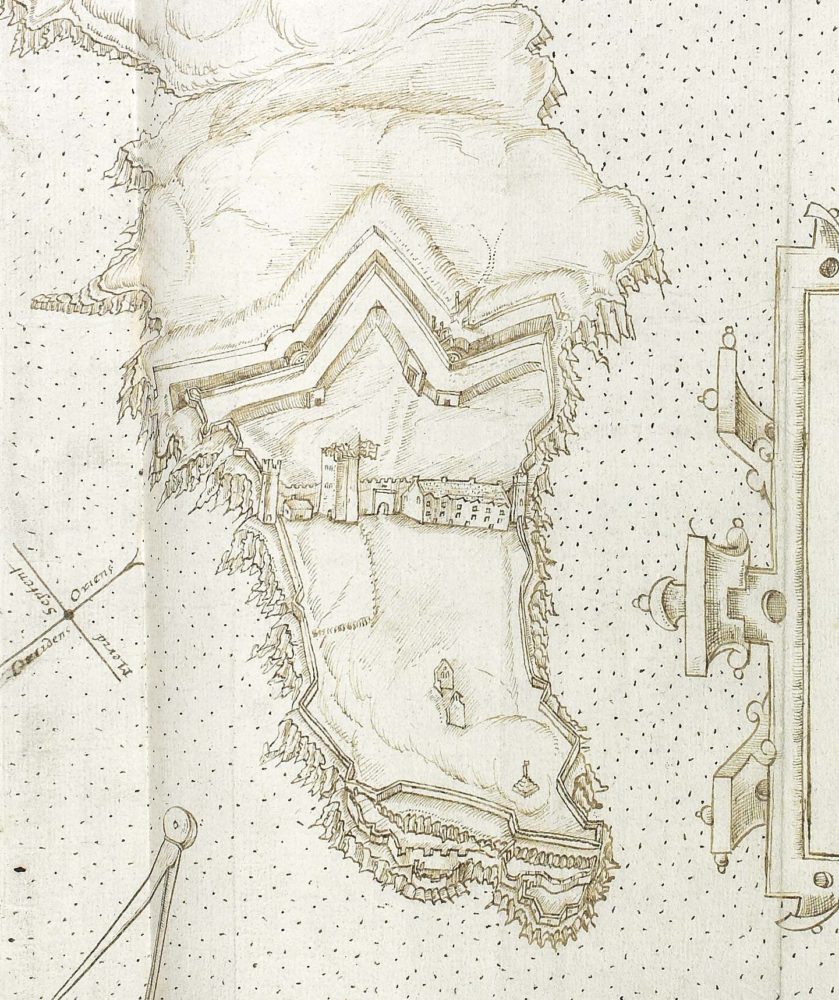
Map of Duncannon Fort dating to late 16th or early 17th century ©Lambeth Palace Library
Ireland at the time had a parliament comprised of the Protestant Ascendancy, a landowning class under the yoke of the English crown and seeking to establish a measure of independence from it. But there was no question of extending the franchise to the ordinary peasant or sharecropper. 1782 is also the year of the founding of the Irish Volunteers in Dungannon, a force keen to secure free trade for Ireland and opposed to the French. Granting land to Geneva rebels was part of a grander plan to stimulate trade and in line with contemporary anti-French sentiment.
Lord Temple, Ireland’s Lord Lieutenant and Vice-Regent, endowed the tract of 11,000 acres overlooking the Suir estuary. Temple had ulterior motives. He thought an influx of Geneva Protestants would have a sobering effect on the locals. In a letter to Grenville,[1] the Chief Secretary, Temple mused that the Swiss in Waterford “might make an essential reform in the religion, industry and mores of the South who want it more”. He had plans to establish a university there but needed his scheme kept secret from the governors of Trinity College.
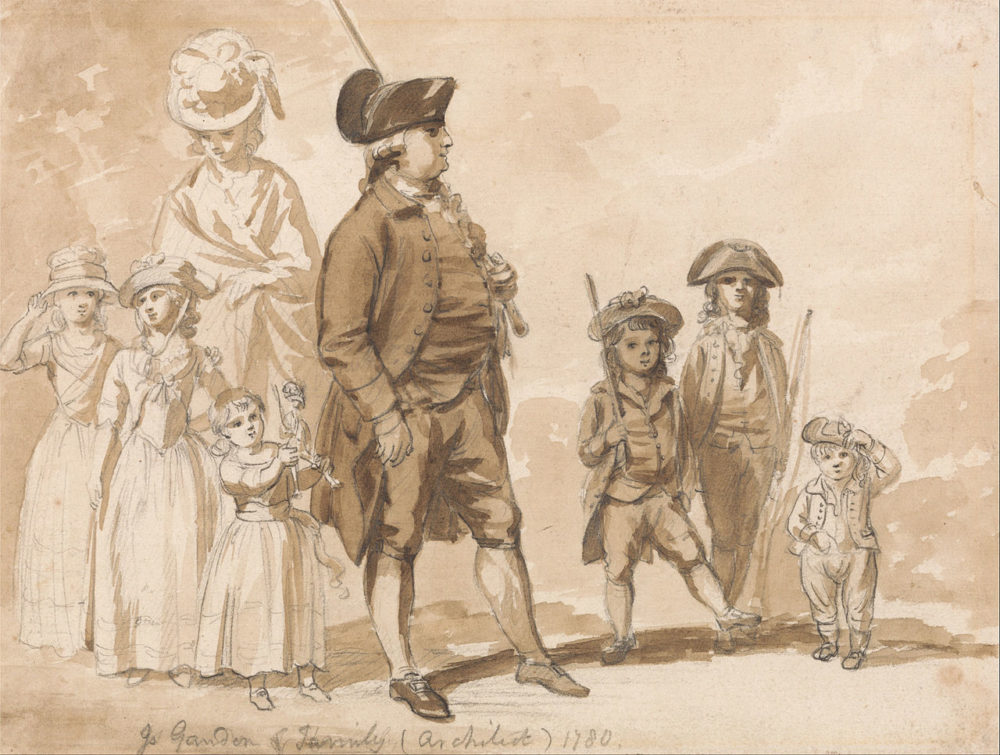
James Gandon and Family by Paul Sandby
No less a figure than James Gandon, himself of French Huguenot descent, was appointed architect. Gandon was responsible for O’Connell Bridge, the Four Courts and the Bank of Ireland, all well-known Dublin landmarks. There were plans for a school, the Swiss being known for excellence in education. Town planning was grandiose. Existing documents show provision for not one but two churches, academies of science and arts, and row housing as befitted the artisan class. The original town footprint stretched south to the headland of Crooke and was intended to be much larger than the barracks ruins evident on-site today.
Ami Melly was the de facto leader of the Genevan exiles. An advance group disembarked at Waterford. They wanted representation in the Irish parliament (Temple’s “very unreasonable in their demands”), a franchise even the Catholic Irish didn’t have at that time. They also demanded the right to their own laws. Thus the project fell foul of Swiss and Anglo-Irish intransigence: neither side was prepared to make concessions. The august tradition of Swiss democracy came up against English colonialism in its back yard. “Some few of the Genevese came over to Ireland, but they soon returned, rather chilled by the prospect before them,” Egan tells us.
It was not just watchmaking that the people of Ireland missed out on. P. M. Egan’s county history cites a local farmer who reminds us of Waterford’s lost industry of silk weaving:
You see, sir, these people that came here were great silk waivers,’ and they expected, of course, to go on well at their trade. Myself doesn’t know, but as I hears. They set a lot of mulberry trees to feed the silk-worms, but sure you know they wouldn’t grow, the climate was too damp, so they gave up the place and went back again to their own country.
Perhaps some mulberry descendants still grow today along the Suir estuary, with the benefit of the warming Gulf Stream. (Those extant on the Upper Suir were planted in 1702 to commemorate the coronation of Queen Anne.) The only remains today of this attempted New Geneva are some ruined walls in a grassy field above the sea.
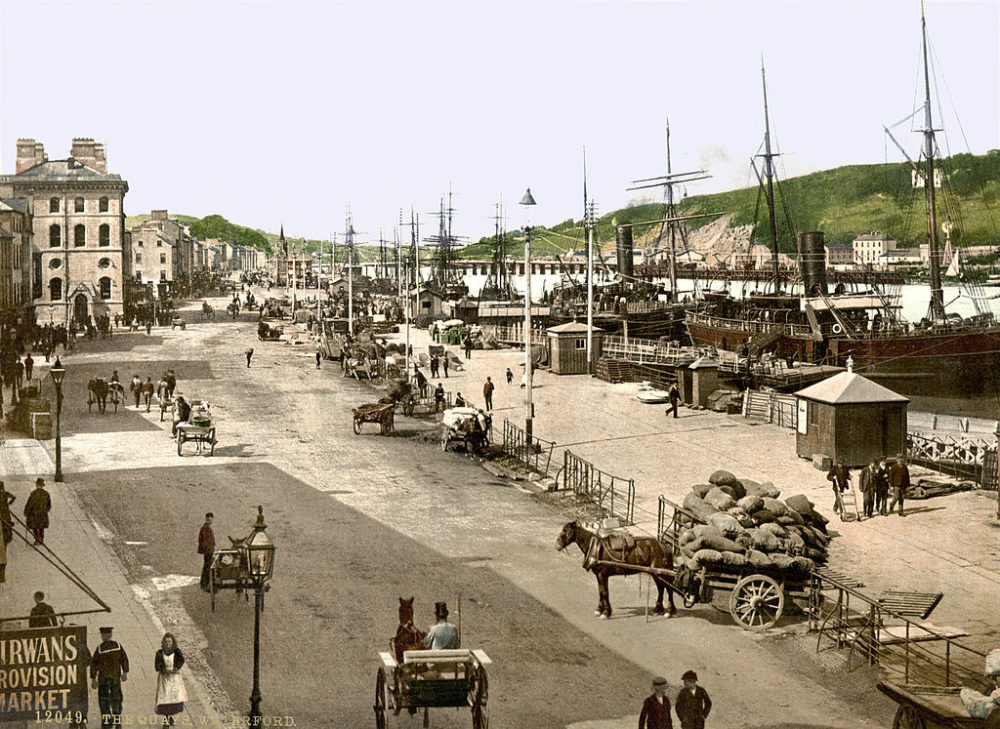
The quays in Waterford city, circa 1890
The site was turned into a prison housing 1798 rebels – “croppy boys” in local parlance, referring to their cropped hair. Over a thousand nationalist prisoners were interned at what became Geneva Barracks, across the estuary from Duncannon Fort. The site was ideal for shipping them out to the colonies. In one of history’s many ironies, the Geneva utopian settlement morphed into a holding centre for Irish rebels transported to Australia or conscripted into the Prussian army. What had begun in utopianism, ended in incarceration, with an after-life of song. Geneva Barracks makes a brief appearance in the last verse of the well-known rebel song “The Croppy Boy”, one of James Joyce’s favourites and cited by him in Ulysses:
At Geneva Barrack that young man died,
And at Passage they have his body laid.
Good people who live in peace and joy,
Breathe a prayer and a tear for the Croppy Boy.
The song’s lyrics are by Irish poet William B. McBurney (Carroll Malone) and it is set to a five-hundred-year-old air, “Cailin Óg a Stór”, a tune picked up by Nobel prizewinner Bob Dylan in his song “Bob Dylan’s Dream”.
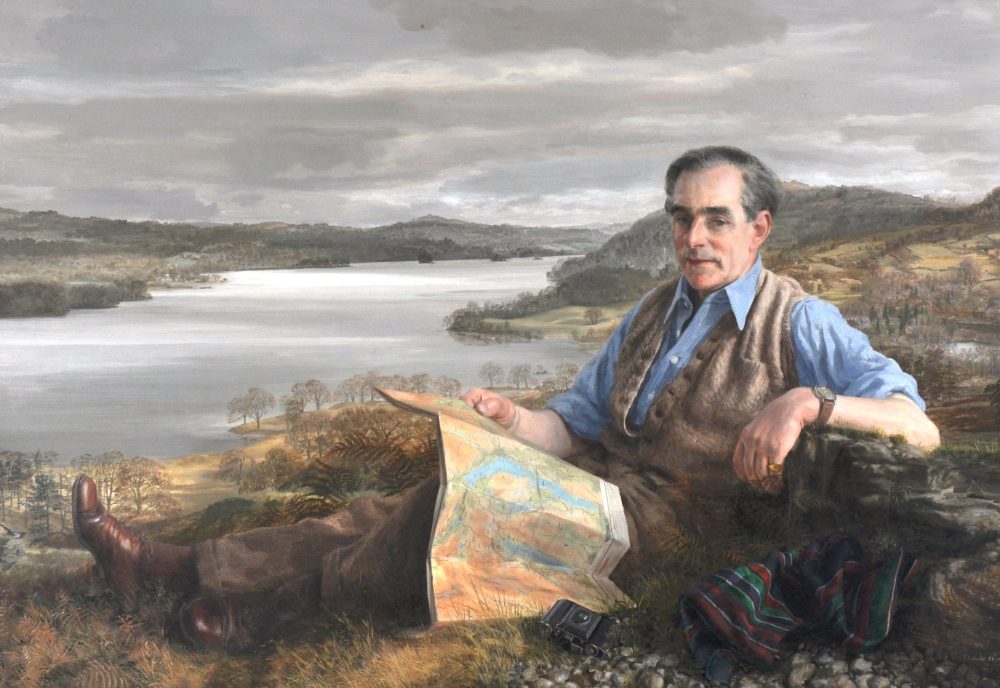
Essayist, traveller and historian Hubert Butler, painted in 1957 by Claude Harrison
Groundbreaking and stylish Irish essayist Hubert Butler (of the family originally expropriated by the Alcocks of Waterford) explored this early utopian experiment in “New Geneva in Waterford”, a short essay published in the Journal of the Royal Society of Antiquarians of Ireland in 1947, and to which I am indebted. Writing from Geneva, Butler brings to bear documentary research from the Hotel de Ville archives. “Geneva was a hotbed of humanitarian thinking, very disquieting to its rulers and also to its neighbours in the Kingdoms of France and Savoy.” Butler explains the rationale behind the choice of a Waterford site by the Viceroy, Lord Temple: “I wished to remove them from the Northern Republicans and to place them where they might make an essential reform in the religion…” The whiff of ethnic cleansing here is unmistakable and the name Geneva Barracks still resonates with colonial oppression.
[1] Letter dated February 9, 1783.

